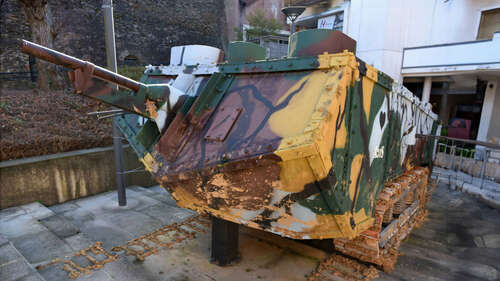
Though the Schneider CA1 would be France’s first tank developed for World War I, both that tank and the Saint-Chamond would eventually be considered design failures. Produced by the French military at the foundry and steelworks factory in Saint-Chamond, around 400 of the tanks would ultimately be manufactured by the war’s end.
The Saint-Chamond weighed 23 tons, notably heavier than the Schneider, but was longer, making it, in theory, more capable of driving over trenches. With a 90hp engine, the rudimentary design was capable of a top speed of 5mph, which would slow to a 2.5mph crawl on unpaved terrain.
However, even though the Saint-Chamond lacked mobility, it would still prove useful, at least to some degree, as the 75mm front cannon was powerful enough to make the early design a formidable stationary gun. It also possessed four 8mm machine guns, which made it quite fearsome against infantry forces.
Though it was one of the earliest examples of an armored vehicle, the 17-19.5mm armor was only tough enough to protect from small arms and rifle fire, making the tank vulnerable to armor-piercing rounds and artillery. This, however, would not be the only reason that would ultimately cause the Saint-Chamond to be viewed as a failure by most military experts.

